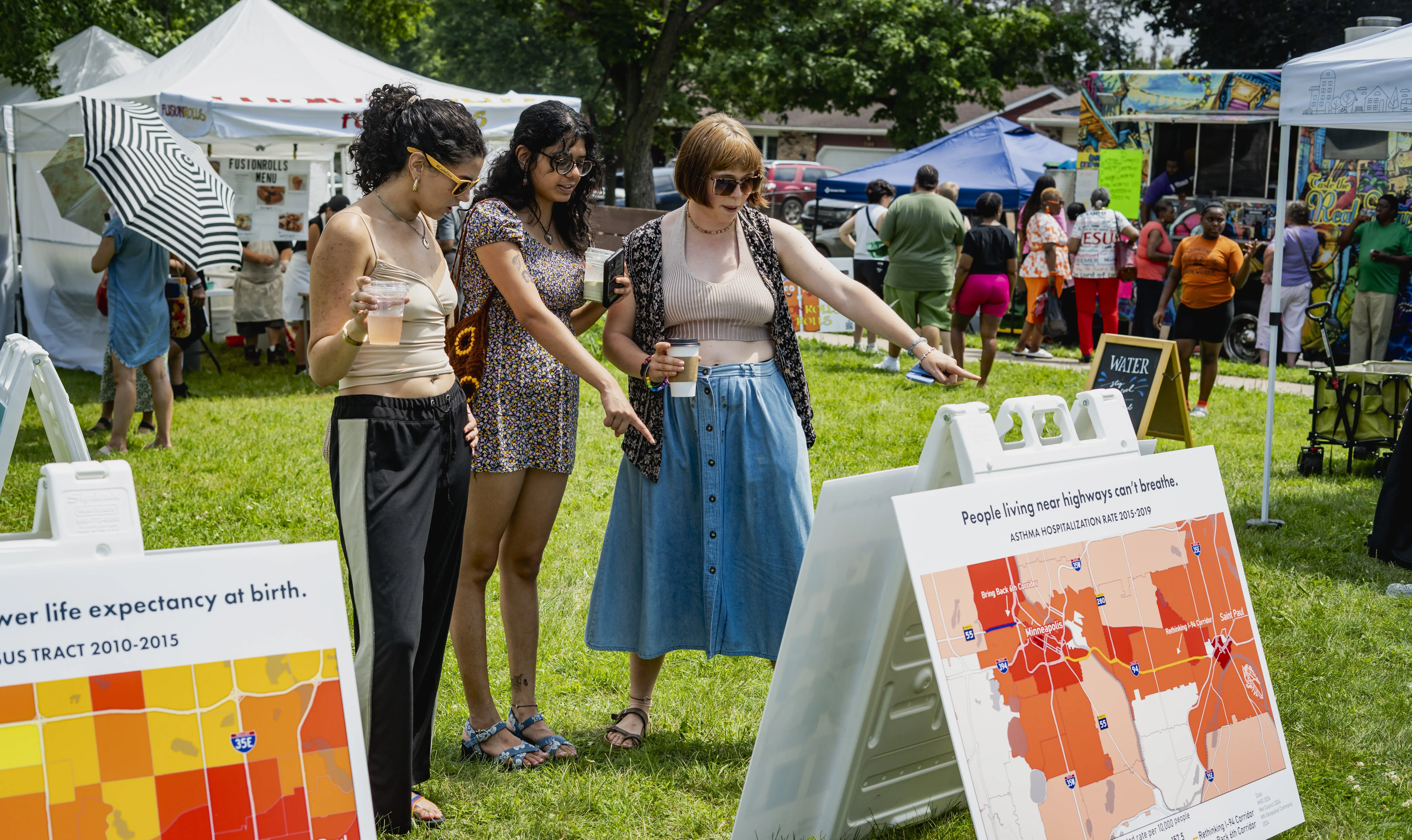
On Sunday, July 14th, in Central Village Park in the Rondo neighborhood of Saint Paul, you could find neighborhood kids tie-dying, playing with puppets, and collaborating with Anishinaabe artist Courtney Cochran on screenprints. You could hear the Mt. Olivet Baptist Church choir singing on the nearby stage while local businesses put up tents and sold everything from books to soap to spice mixes. People carried quart-sized mango lemonade, a popular treat on the steamy 95-degree day, from one of the many food trucks that collaborated with Our Streets to offer free food during Imagine Frogtown & Rondo.
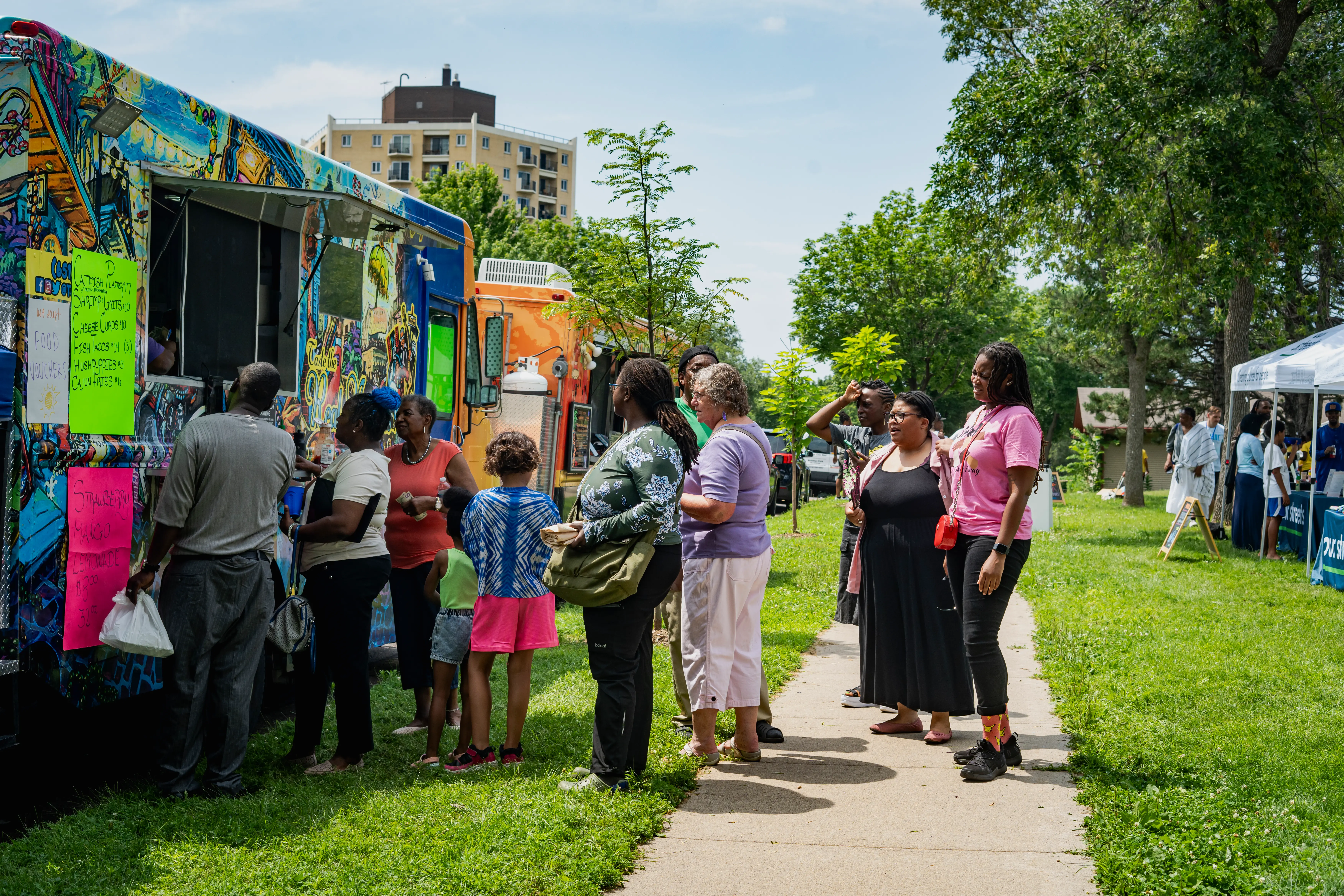
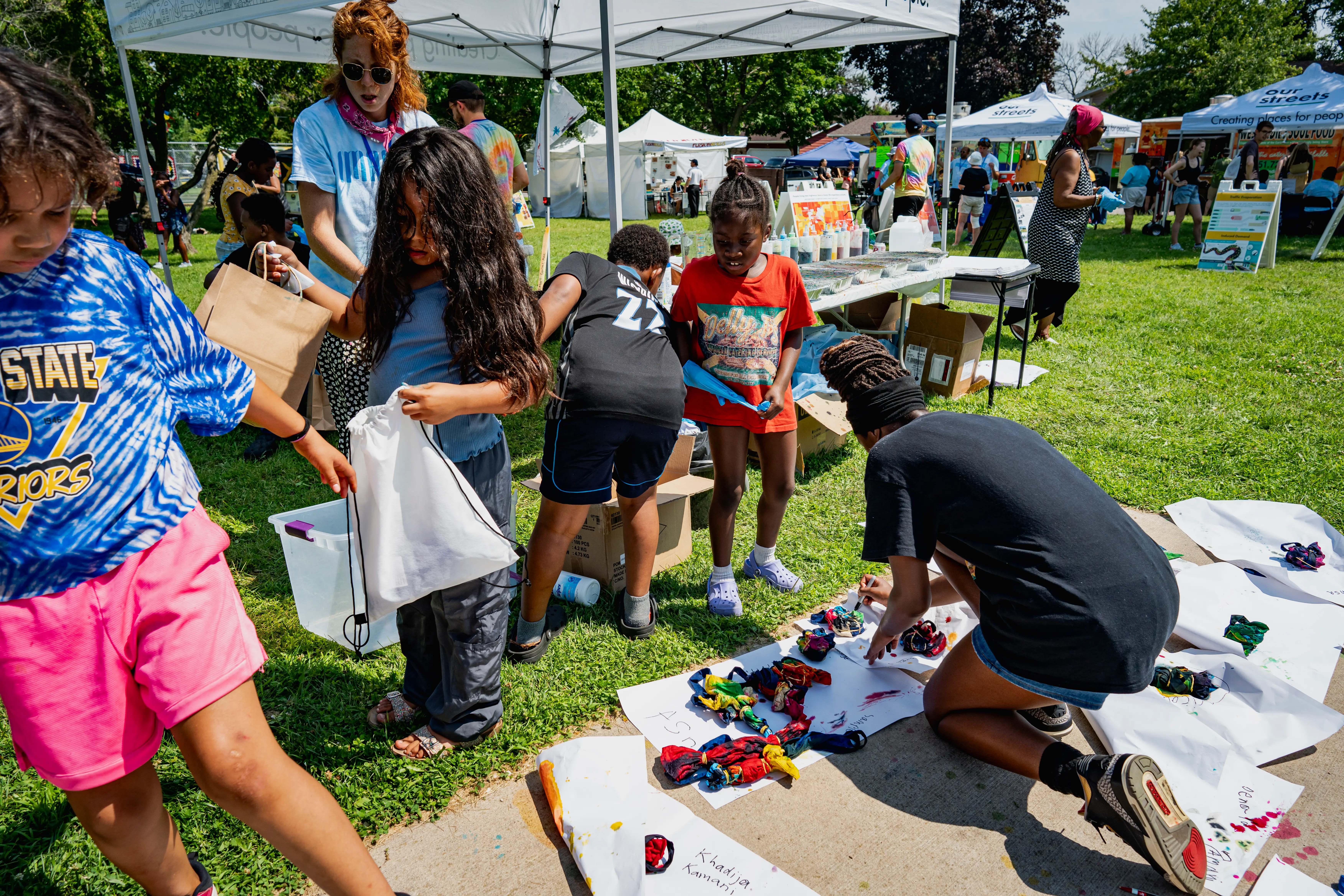
More than just a fun block party, the Imagine Frogtown & Rondo event was also a successful community outreach opportunity to uplift the Twin Cities Boulevard campaign. We officially expanded outside of Minneapolis in May, and this was our first event across the river.
One of the goals of the Imagine series is to empower communities to engage with transportation projects in their neighborhood. In this instance, we provided neighbors in Rondo and Frogtown information about the Minnesota Department of Transportation’s (MnDOT) Rethinking I-94 project so they can provide input in the process.
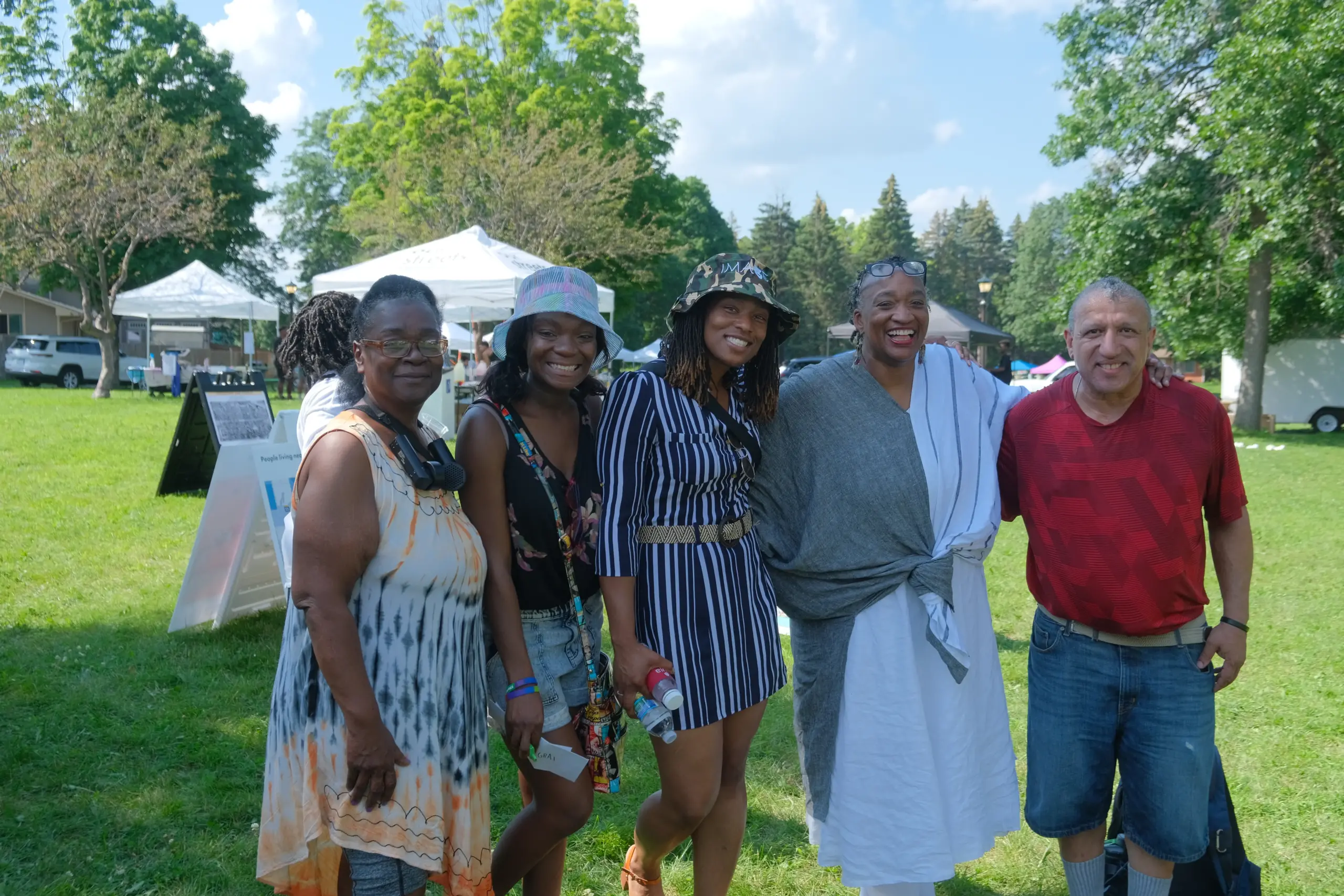
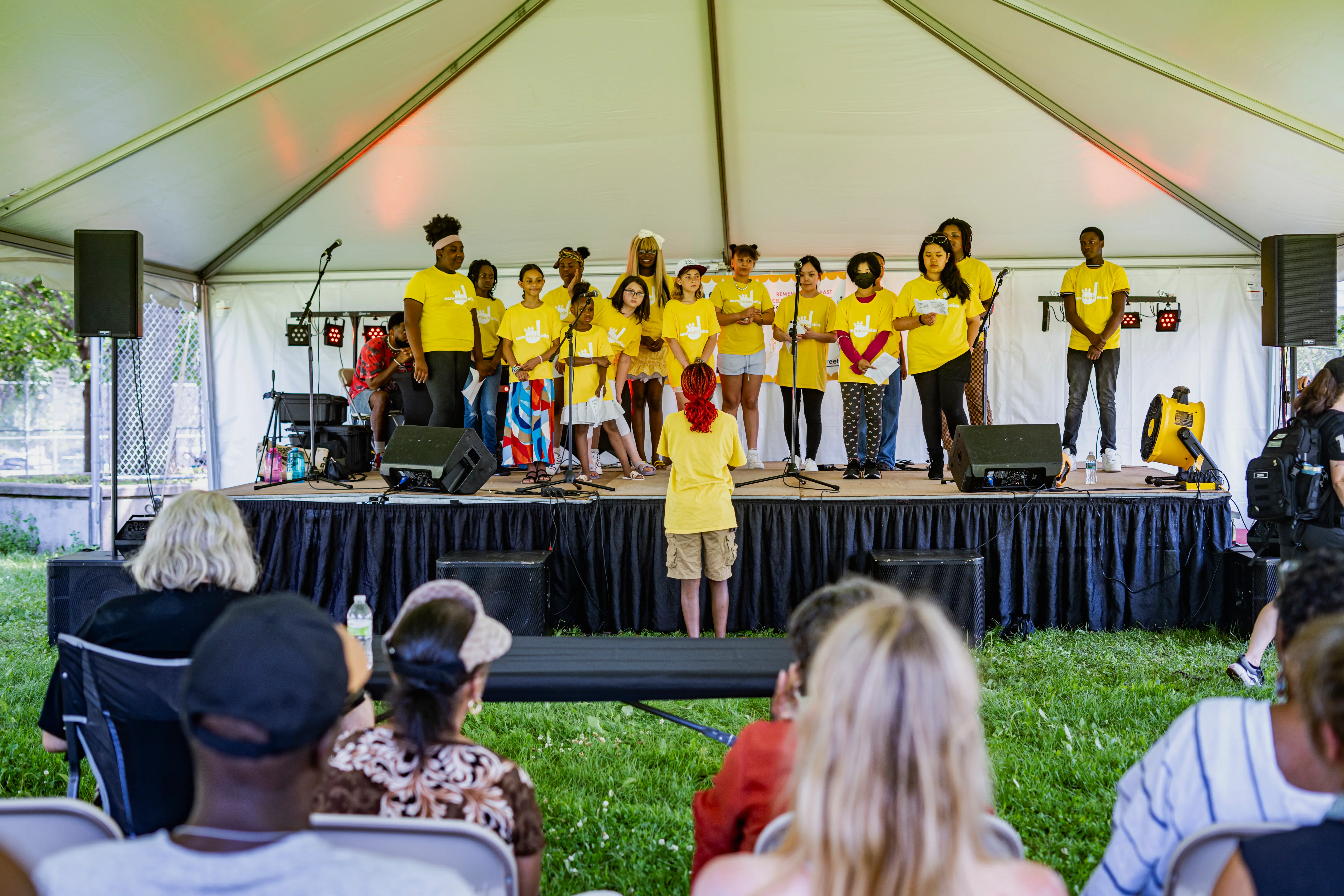
During a Policy Advisory Committee meeting last February, MnDOT received (deserved) criticism regarding their community engagement around the project. While the painful memories and ongoing harms of the construction of I-94 through Rondo and Frogtown are still ever present, many of the attendees knew little to nothing about the Rethinking I-94 project. MnDOT’s lack of meaningful engagement was palpable. Community members at the event weren’t aware of the impending massive interstate project that will greatly impact both neighborhoods for the next 60 years.
With a fraction of the Department’s massive budget, Our Streets has been able to get significantly more representative feedback while addressing the intersectional benefits of the project alternatives, not just moving personal vehicles through the Twin Cities as fast as possible. This has been incredibly important to the Twin Cities Boulevard campaign, as the grassroots advocacy resisting highway rebuild and expansion is responsible for the two “at-grade” project alternatives of the ten proposed by MnDOT.
During the Imagine event, Our Streets shared information about the potential of an “at-grade” boulevard option. This option would remove the urban interstate that destroyed and displaced homes and businesses and replace it with a reparative street that would improve health, economic, and climate outcomes and return land to surrounding neighborhoods.
Like Cedar-Riverside and all other communities neighboring I-94, Frogtown and Rondo residents deserve to have all options on the table before MnDOT makes a decision on a preferred project alternative. Both Our Streets and Reconnect Rondo, a fellow transportation nonprofit organizing around Rethinking I-94, have a shared goal of addressing the injustice of the highway and reconnecting the neighborhood. Reconnect Rondo has proposed a land bridge to reconnect a portion of the Rondo neighborhood, a proposal that is compatible with a highway-to-boulevard conversion.
However, a recent position paper from Reconnect Rondo outlined support for continuing to study project options that would rebuild the highway (with the exception of the expansion options) but withheld support for the boulevard options. Why is Reconnect Rondo advocating for the removal of boulevard options before community members in Rondo have the opportunity to learn more about the project and share their opinion?
Reconnect Rondo has also deemed a rebuilt highway with eight lanes of traffic, plus frontage roads, to be acceptable for the Rondo community despite more land use potential with a land bridge over a boulevard. It is counter-intuitive to only partially reconnect Rondo and divide most of it for another century.
This option works very well with the proposed District and Land Bridge and provides twoway streets on either side of the bridge while allowing development to occur on top of the land bridge. This appears to provide the maximum accessibility for the District and Land Bridge with the least impact. For these reasons, this alternative is acceptable to RCR and the Rondo community and is recommended to be carried forward.
Rethinking I-94 Alternatives Position Paper, referring to Local/Regional Roadways A project alternative
The position paper states that there are benefits like “cleaner air, reduced traffic noise, social and economic opportunities, cultural and historic preservation, the introduction of new technologies, water and runoff capture and treatment, and a variety of other benefits for the neighborhood through our restorative vision framework” with a land bridge, despite little evidence of highway caps mitigating pollution.
"Michael Adams, a Brooklyn Park resident who grew up in Rondo, is skeptical about the land bridge idea. “You drive cars underneath the place humans are, the fumes have to go somewhere. The carbon monoxide exhaust would be like living in a garage with a car on.”" https://t.co/0uJnX4NL6p
— Matt Privratsky (@MattPrivratsky) June 14, 2024
The position paper also claims the benefits of a highway-to-boulevard conversion are “at best, questionable and would be greatly overshadowed by the direct and indirect impacts.” Is this because the 2019-2021 Technical Advisory Team of Reconnect Rondo, led by MnDOT veteran Keith Baker, was primarily composed of consultants from the freeway industrial complex who have a financial interest in expanding highways?
If the primary goal is to repair and restore communities, why not instead come together around a solution that maximizes land use, economic, climate, and health benefits? We’ve been doorknocking along the 7.5-mile stretch of I-94 that will be most impacted by the Rethinking I-94 project since 2022. We’ve found no consensus around a land bridge over a rebuilt highway.
Apart from the additional land use, economic, climate, and health benefits to Frogtown and Rondo, the highway-to-boulevard conversion offers a solution that a land bridge with a reconstructed freeway cannot. It opens the door for residents of Cedar-Riverside, Merriam Park, Prospect Park, and Union Park to imagine their reconnected neighborhoods as well. All neighbors of I-94 deserve to know the impacts a rebuilt I-94 will have on their health, the climate, and their community. Every community member should be allowed to imagine a future without a highway running through their neighborhood. Join us at Imagine Cedarfest as we continue to Imagine a better future together.
Learn more about Twin Cities Boulevard.
A better future is possible.